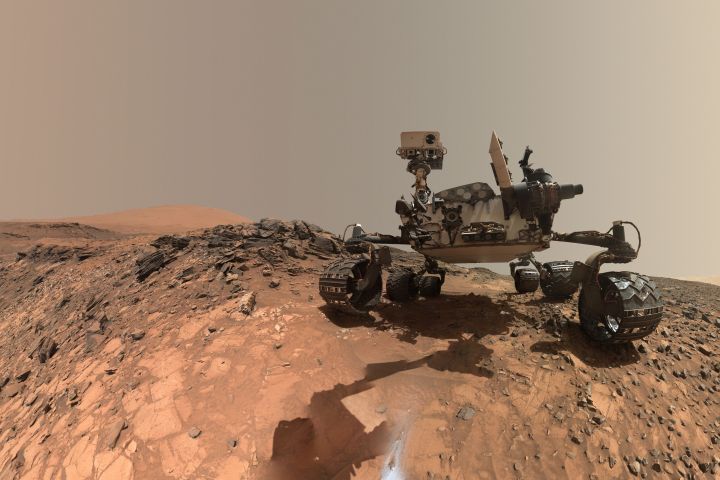
It could be a ground-breaking discovery, he told the website Inside Outer Space. “They look remarkably similar to Ordovician trace fossils I have studied and photographed here on Earth,” he said. “If not trace fossils, what other geological explanations will NASA come up with?”
The rover has given us some stunning images of the red planet’s landscape, but tiny formations in a Martian rock may be the biggest find yet.
The stick-like features were first spotted in black-and-white photos takes by the rover. They’re quite unusual, so Curiosity is heading back there to take a closer look. “This site was so interesting that we backtracked to get to where the rover was parked for this plan,” wrote Curiosity team member Christopher Edwards in the January 3 Curiosity mission update.
The most likely explanation for the strange images is a natural formation, said Pascal Lee of the Mars Institute. “The Curiosity images really pique our curiosity,” he said. “It’s hard to tell what the wiggly sticks are, and a strictly mineral origin is, of course, the most plausible.”
The tiny tubes could be evidence of bioturbation, which is what occurs when organisms living in sediments leave an imprint on their structure. “A common example of bioturbation is the formation of worm burrows,” Lee explained. “The burrows, once refilled with sediments, fossilized, and then exposed by erosion, can end up looking like wiggly sticks.”
“To claim that we’re seeing bioturbation on Mars — which I did not say — would be an extraordinary claim,” he added.
The structures are very small, about a millimeter in width and five millimeters long. Their angular nature may indicate that they were formed by tiny crystals. Crystal molds, which are often found here on Earth, can form when crystals in rock dissolve. Even a roving laboratory like Curiosity would be hard pressed to make a definitive analysis, noted Ashwin Vasavada, project scientist for Curiousity.
“That’s pretty challenging on Earth to distinguish those two things without being able to put these things into a lab to look for the presence of organics,” he said. “We have a very limited capability overall to understand whether something is biological or not.”
Still, Curiosity does have some tools at its disposal, with Alpha Particle X-ray Spectrometer analysis planned for the site. The color camera on MAHLI will also be used to collect more detailed images for scientists to study.
“But I have to say, the imagery is really intriguing, and I hope Curiosity spends more time in the area to get to the bottom of this,” Lee said. “This is exciting!”
Editors' Recommendations
- NASA’s Mars drone captures cool shots of rover landing gear
- Curiosity rover nopes out of region of sharp Mars rocks
- NASA’s Perseverance Mars rover breaks 17-year-old driving record
- NASA’s Perseverance rover shares its top Mars photos from 2021
- Check out this incredibly detailed Mars imagery captured by NASA’s rover



